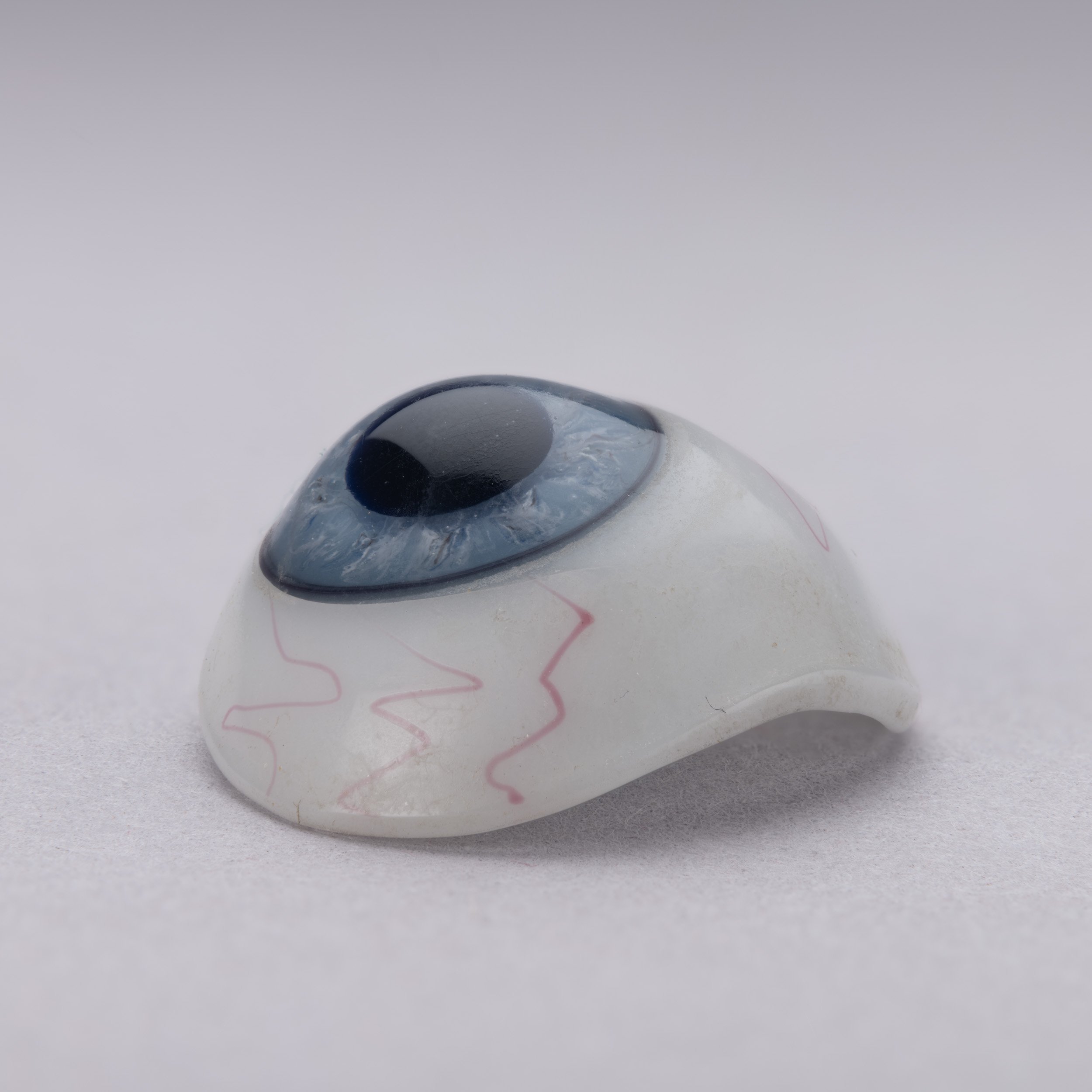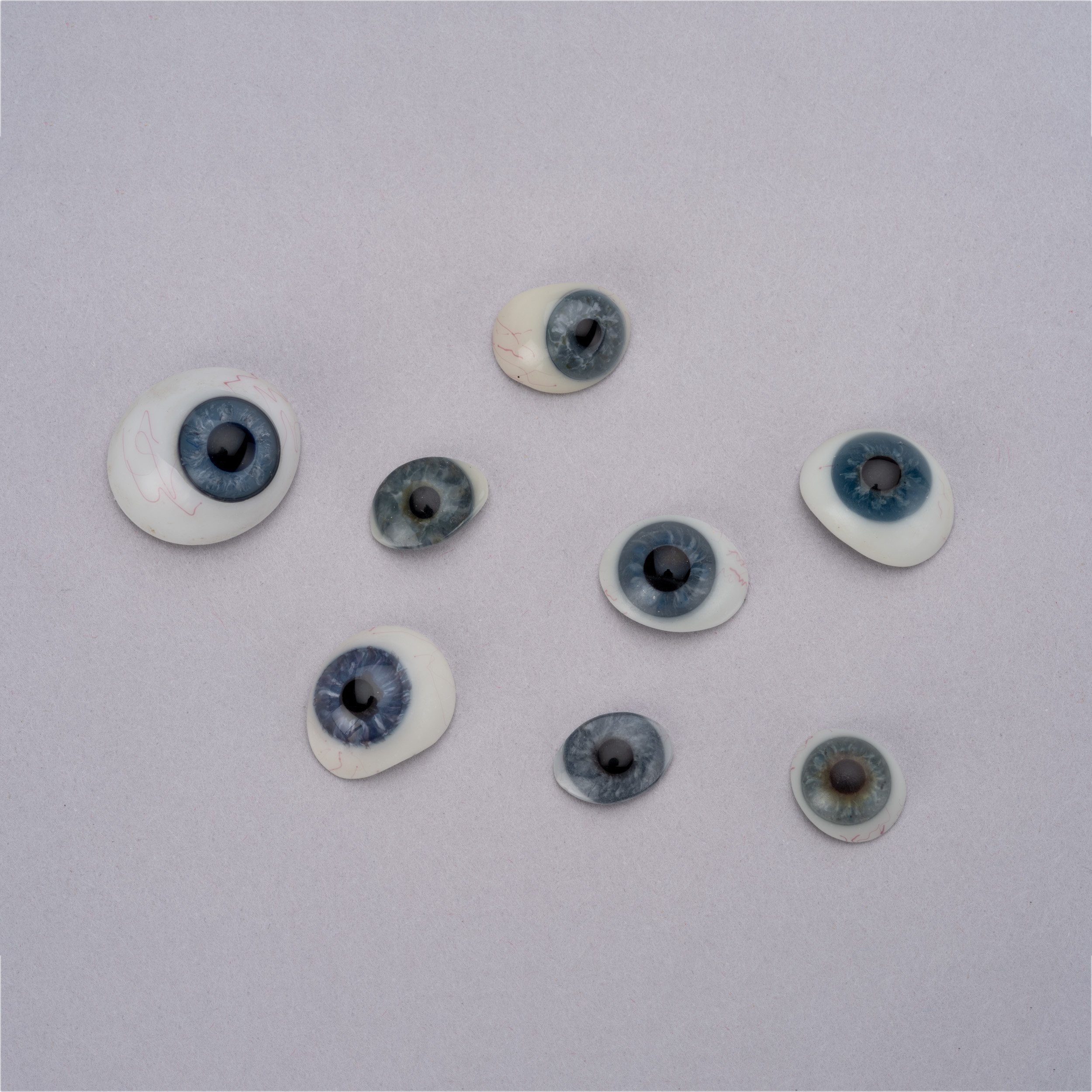


Glass eyes
These early 1900s hand-painted glass eyes belonged to Mrs Gladys May Hewston (1910-1993). After her right eye was damaged during birth, it was removed and replaced with a high-quality glass eye from the Birmingham and Midland Free Hospital for Children. Each glass eye was meticulously painted to match her natural left eye. Advances in anaesthetics and antisepsis in the late 19th century allowed for the surgical insertion of these prosthetics, ensuring they fit safely and comfortably in the eye socket.
Glass eyes have been used as prosthetic replacements for damaged or missing eyes since the early 19th century. Initially crafted from glass and later from acrylic, these artificial eyes were meticulously hand-painted to match the patient's remaining eye. Advances in anaesthetics and antisepsis in the late 19th century allowed for surgical insertion, improving fit and comfort. Glass eyes not only restored a natural appearance but also helped patients regain confidence and social acceptance. Today, ocular prosthetics continue to evolve, offering even more lifelike and comfortable solutions.